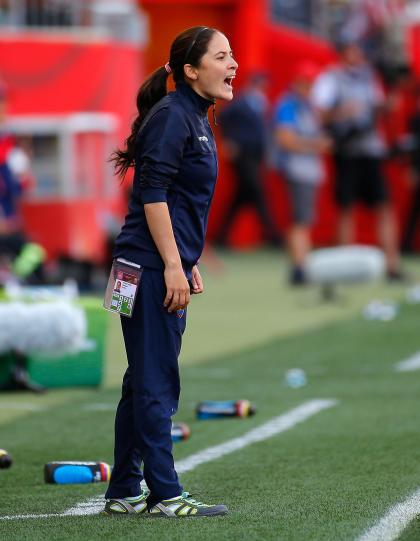Women's World Cup already a winner for committing to an expanded format

There was a story that slipped through the cracks last week. In Winnipeg, members of the Thai community took the day off work and pulled their kids out of school. They hosted a party to commemorate their country's Women's World Cup game against Germany. They draped themselves in blue, red and white. They painted their faces. They banged drums. They walked through the streets and proudly hoisted the Thai flag above their heads, noisily making their pilgrimage towards the stadium.
In tiny, nondescript soccer markets, it's moments like these that resonate. It's an infectious feeling, it's warm and inviting and family-friendly. In many ways, the Thailand supporters are a perfect metaphor for what the tournament is. But, of course, they're only here because the competition has expanded.
In some quarters, there has been plenty of criticism. When Norway and Germany both won their opening group games by an aggregate of 14-0, many questioned the wisdom of allowing such inexperienced, lightweight teams to step into an unforgiving and public environment. When Cameroon thumped six past Ecuador the following day, it was all too easy to ring the alarm bell.
Of course, never let the truth get in the way of a good story. In 36 group games this month, teams were separated by two or more goals on 10 occasions. In simple math terms, we've seen a “comprehensive’’ result every 3.6 games. In 2011, when there was a smaller and allegedly more competitive tournament, “comprehensive’’ wins happened more frequently - every three games. On average, this tournament is more competitive in spite of getting bigger.
Naturally, the thrashings have received the headlines, the bad press. But there have also been 10 draws. At the same stage four years ago, there were three. Teams are getting closer to each other. But draws aren't sexy. You can't whip things into a frenzy when talking about stalemates. Instead, the critics have jumped on the anti-expansion bandwagon. And it's got very old very quickly.
Maybe many just miss the point of what a World Cup is about. Yes, there's a level of consumption to it. We need to be entertained. We need to be stimulated. But inevitably, it's not about us. It's about groups of athletes competing on an international stage. Some are here to win. Others are just here. Others have fought relentlessly for the right to be here. Others are stepping forward to try and make here a jumping-off point. By just being here, others are pushing a minority sport into the public consciousness of their countries. But we don't really care. We just raise a hand, offer up a flippant gesture or a pithy remark and tell them to move along, that they're not wanted.

Ecuador fell into that category. That's what happens when a team concedes 16 goals in two games. But, as always, there's a wider context. Sadly, that was ignored by many. Like the fact that the team's coach, Vanessa Arauz, is 26 and made history as the youngest person to ever manage a side at a World Cup. Or that the country has only had a women's soccer championship since 2013. Or that their star player - Monica Quinteros – couldn't play at last year's Copa America because she had to work. Or that almost all of the remainder of the World Cup squad has jobs because there's no money to be made in women's soccer in Ecuador.
Leave it to a young person to shine some light on others' ignorance:
“This tournament has been an eye-opener for us”, said Arauz. “When we left Ecuador, we were a bit blind. Now, we better understand what has to be done to play better, to be world-class players.
"We know we need to work (a longer) amount of time, with more continuity, if possible 365 days a year... we have seen only the tip of the iceberg. Now we see what underlies the tip. We do have potential, but we have to invest."
And there lies the most important and most valuable element in this story. Because the same people who criticize a bigger tournament and the presence of so-called weaker teams in the group stages and the knockout rounds will still bleat on about progression and development being critical to the future of the women's game. Maybe they don't see the hypocrisy. Maybe they just choose to ignore it.
For the heavyweights, this World Cup is just another. In four years, it rolls around again. In between, the athletes get paid for playing the game they love. They get some commercial deals. They get plenty of media exposure. In the wider context of women's soccer, they have little to worry about. And in many ways, the World Cup is not about them. It's about teams that arrive with nothing but dreams and aspirations. Hoping that back home, wherever that is, their achievements and spirit and character and belief will make the masses grow to love them and their sport. And that change will happen. And that little girls will watch on a tiny TV screen a million kilometres away and be inspired.
As schmaltzy as it sounds, that's what a World Cup is about – not ridicule or suspicion or mistrust or condemnation. It’s about inclusiveness.


